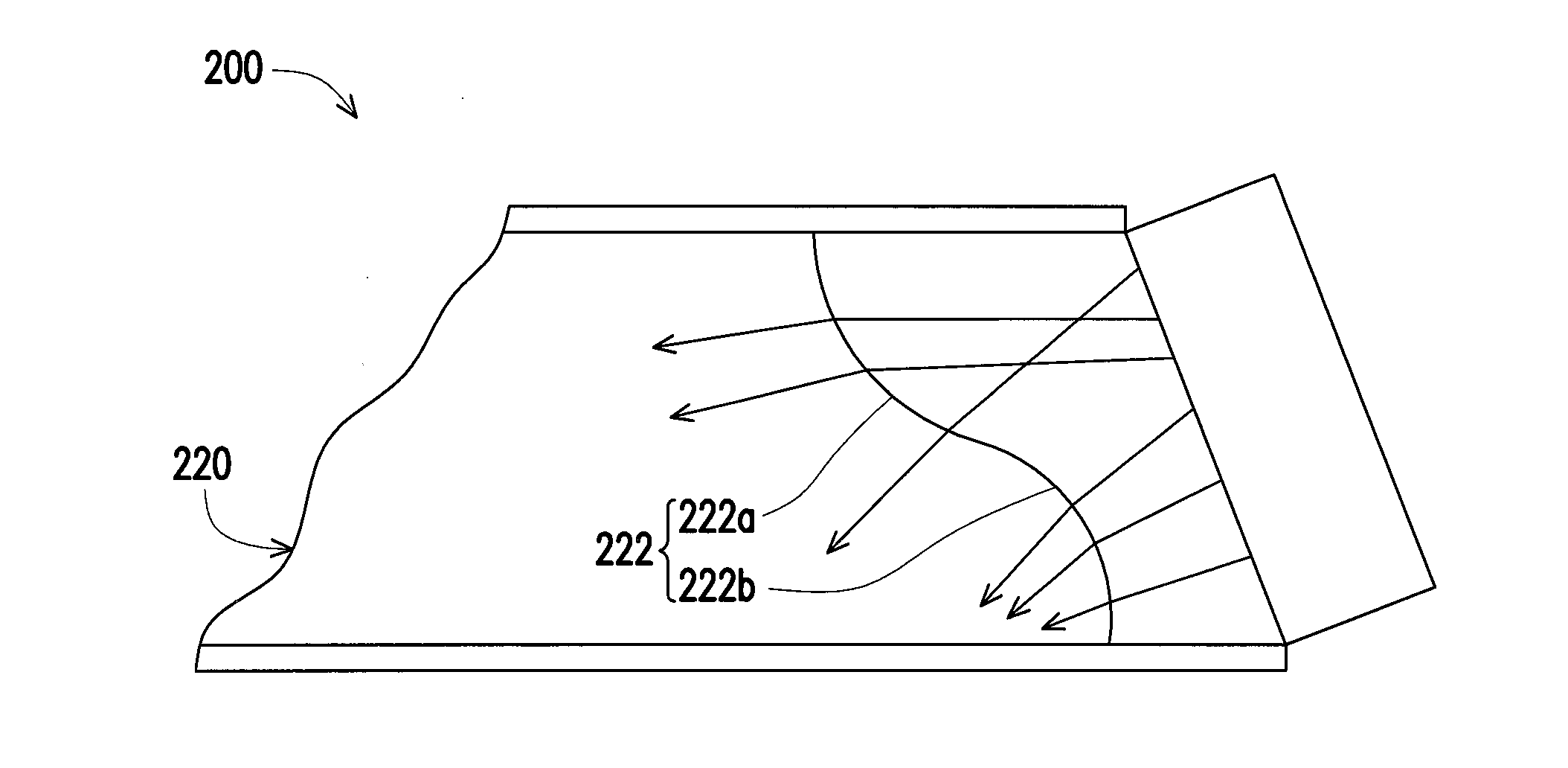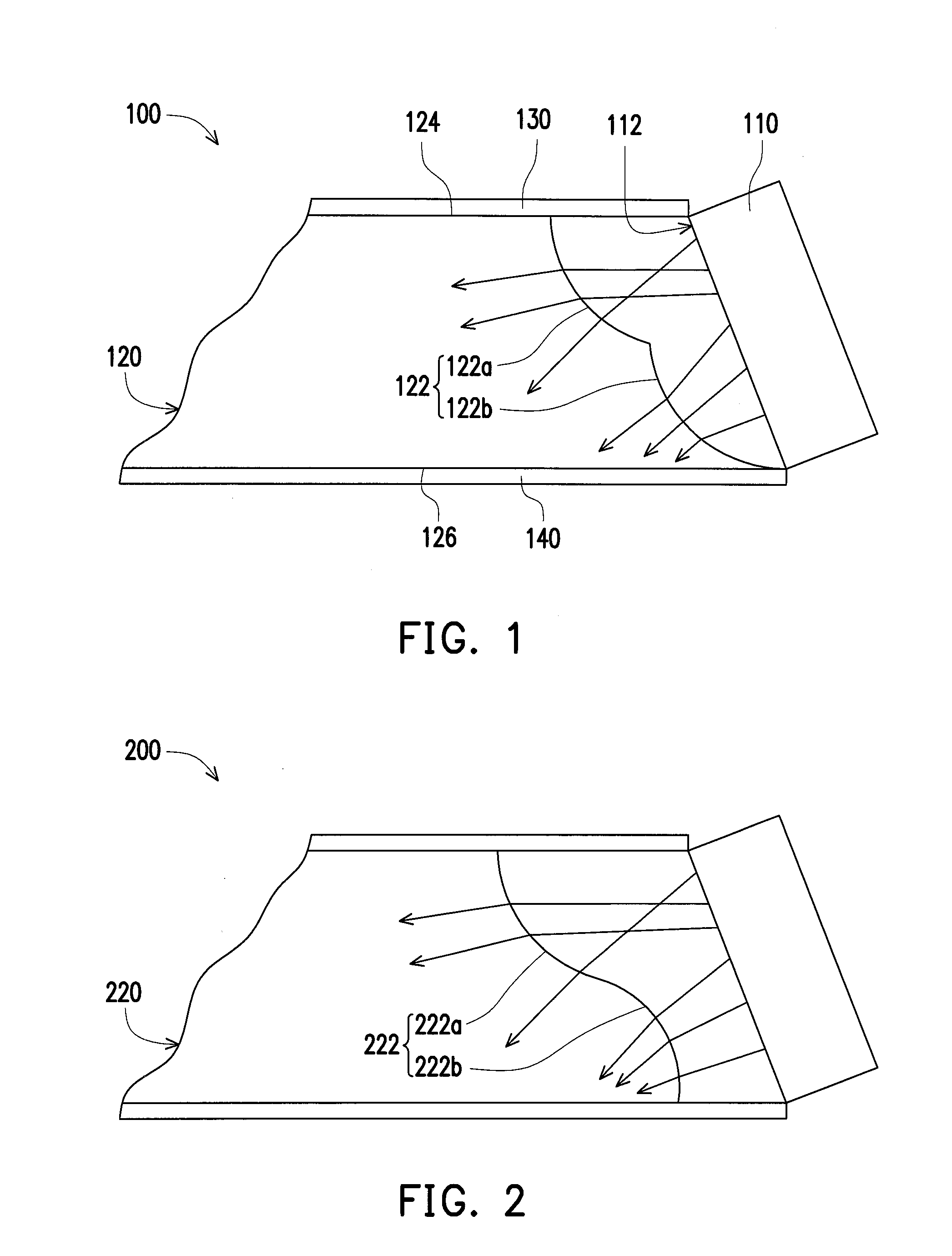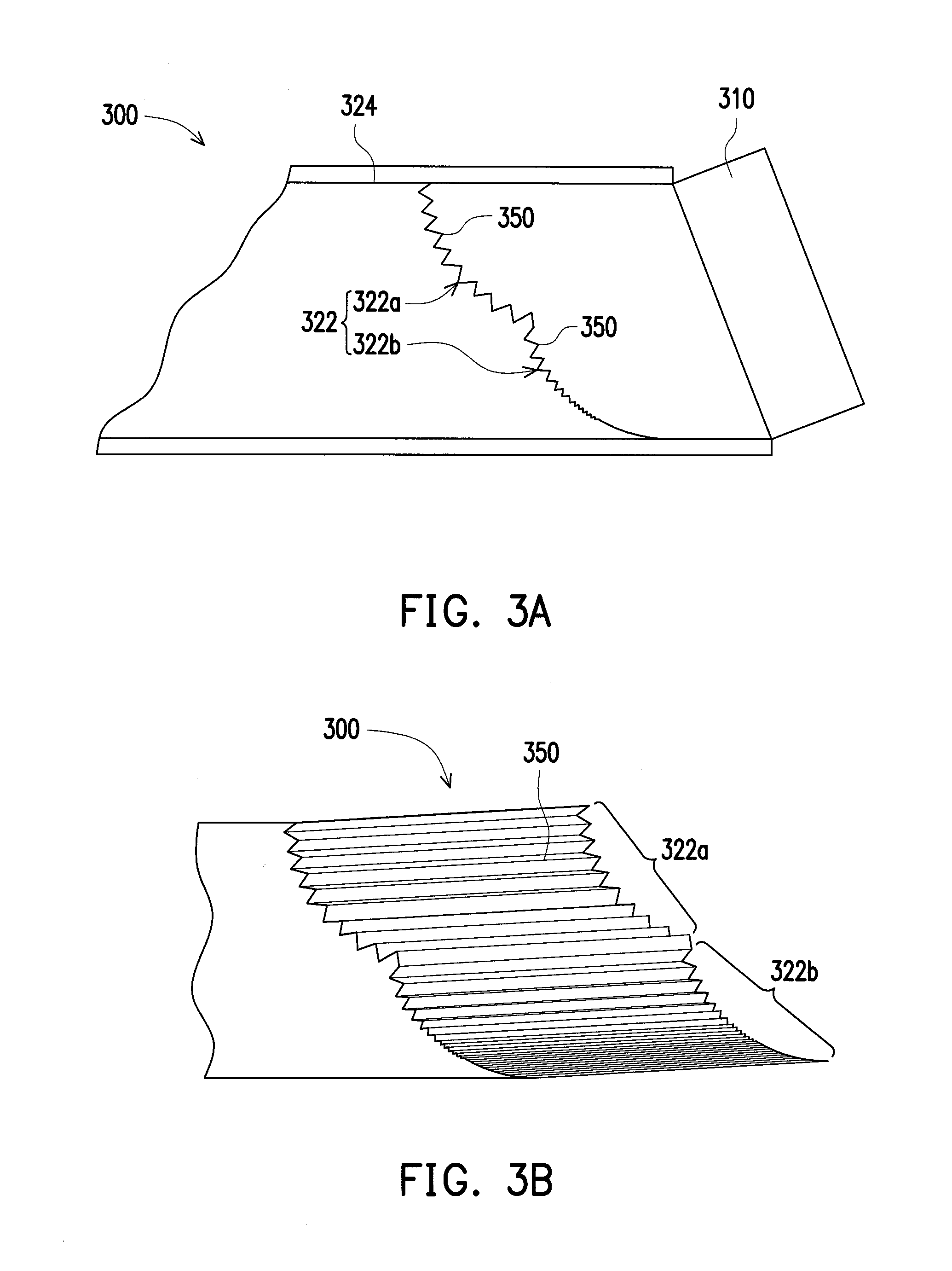Light guide plate and backlight module
- Summary
- Abstract
- Description
- Claims
- Application Information
AI Technical Summary
Benefits of technology
Problems solved by technology
Method used
Image
Examples
Embodiment Construction
[0037]Reference will now be made in detail to the present preferred embodiments of the invention, examples of which are illustrated in the accompanying drawings. Wherever possible, the same reference numbers are used in the drawings and the description to refer to the same or like parts.
[0038]FIG. 1 schematically illustrates a partial side view of a backlight module according to an embodiment of the disclosure. Referring to FIG. 1, a backlight module 100 includes a light source 110, a light guide plate 120, a first reflector 130, and a second reflector 140. In this embodiment, the light source 110 is a light emitting diode (LED), but it is not limited thereto. The light source 110 includes a light emitting surface 112. The light guide plate 120 includes a light incident surface 122, a first surface 124, and a second surface 126, wherein the second surface 126 is opposite to the first surface 124. The light guide plate 120 is disposed at a side of the light source 110, and the light ...
PUM
 Login to View More
Login to View More Abstract
Description
Claims
Application Information
 Login to View More
Login to View More - R&D
- Intellectual Property
- Life Sciences
- Materials
- Tech Scout
- Unparalleled Data Quality
- Higher Quality Content
- 60% Fewer Hallucinations
Browse by: Latest US Patents, China's latest patents, Technical Efficacy Thesaurus, Application Domain, Technology Topic, Popular Technical Reports.
© 2025 PatSnap. All rights reserved.Legal|Privacy policy|Modern Slavery Act Transparency Statement|Sitemap|About US| Contact US: help@patsnap.com



